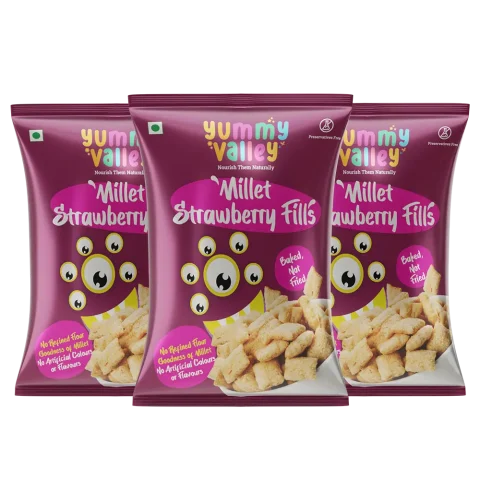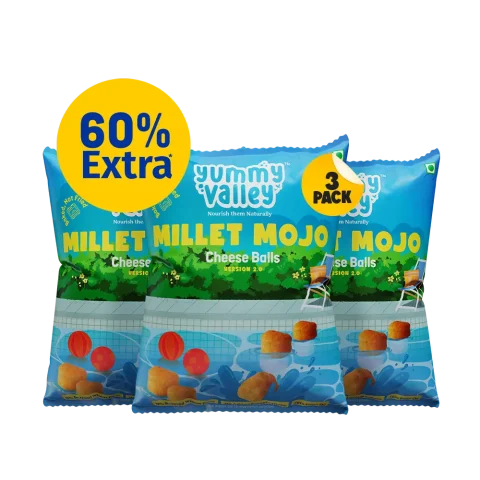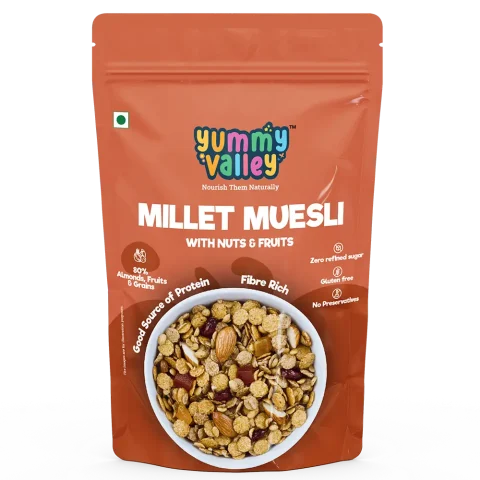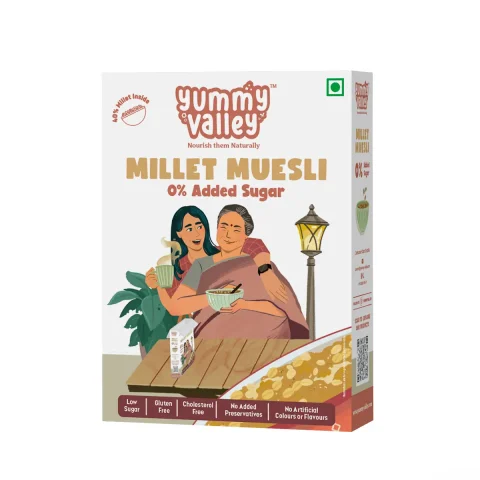YUMMY VALLEY’S SALE 🎁
Upto 20% Off
COD Available for Orders Above ₹299
- Your cart is empty
- Continue Shopping
Millet vs Quinoa: Which Grain is Better for You?
- Published on:
- Post updated 2 times
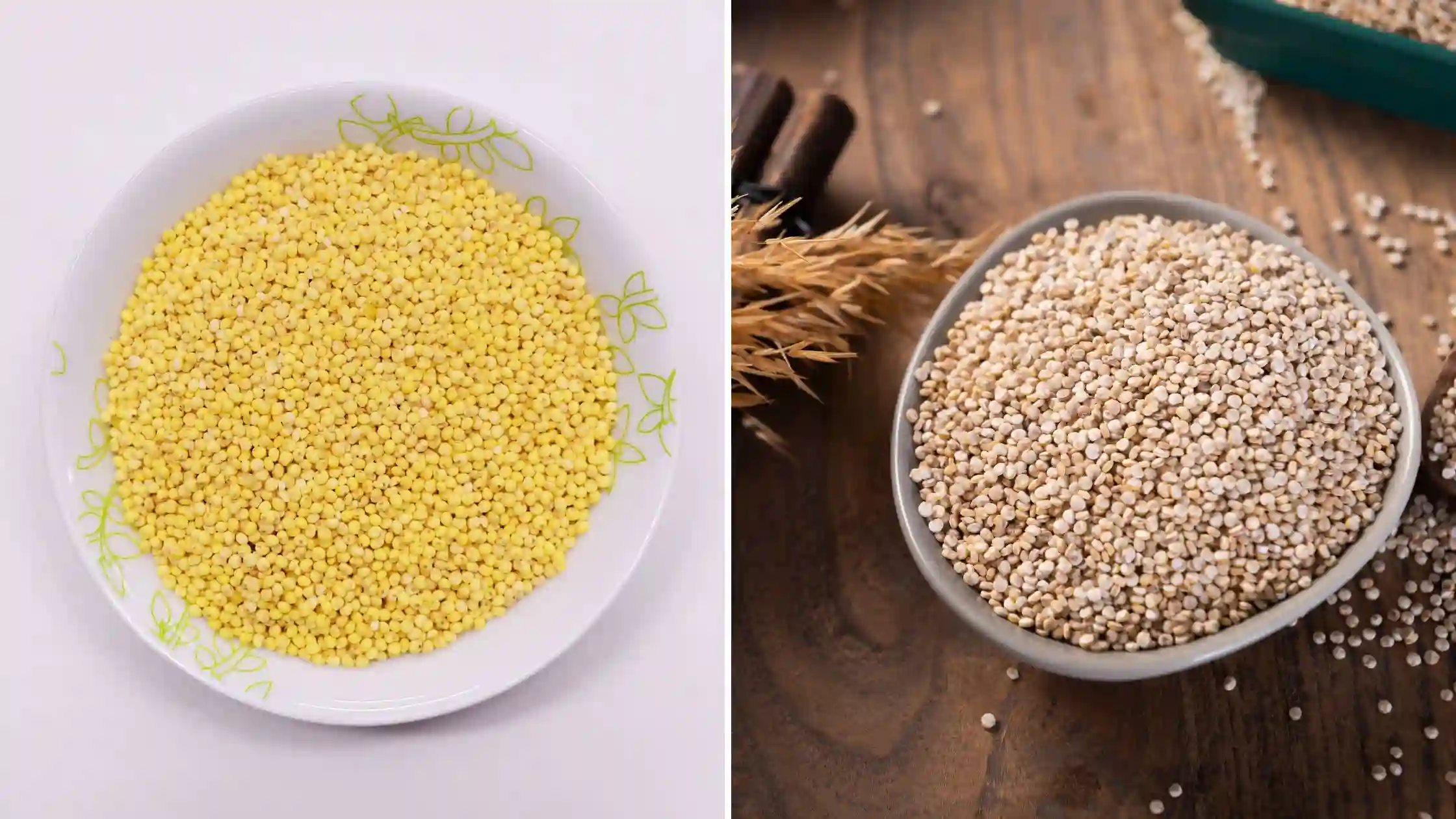
Millet vs Quinoa: In the past few years, some of the historic grains have become part of everyone fitness grocery list specifically due to abundant nutritional values, nutrients and minerals and the reality that majority of them do not comprise gluten. Apart from being rich in fibre and antioxidants, those grains come in distinct flavours and textures to complement any recipe. For this motive, they attract the health-aware clients who are on the lookout for pleasant healthy meals.
Table of Contents
ToggleHow are those historical grains distinct from each different? Here are such grains: millet and quinoa. There are similar features between the two products: they exclude gluten, are proteinaceous, wealthy in fibre, and percentage the identical texture. They may be implemented for salads, porridge, and facet dishes. How are they different and which one is higher in your fitness, if any?
What are Millets?
Millets belongs to Poaceae grass family and it has been being cultivated in Asia and Africa for over 4000 years and it was one of the most popular grain in Europe in the Middle Ages. What is more, it is gluten-free whole grain that has rather rich amount of dietary fibre and that is quite versatile from the point of view of culinary uses. You should ensure that you are using a large pot when boiling millet since it increases in size after being cooked. Different types of millet crops include pearl, proso, finger and foxtail millet and etc., Millet crop is different from other crops in characteristics.
What is Quinoa?
Quinoa is a gluten-related seed that is often prepared and consumed like a grain; this makes it an immensely flexible food in terms of usage. It has mild tastes, and therefore it will match well with other ingredients which make it ideal for salads and side dishes. In addition, quinoa holds a rich protein value; in fact, it is one of the few crops that has all essential amino acids in its composition. Interestingly, quinoa is extra closely related to spinach and chard than to conventional grains.
Millet vs Quinoa: Nutritional Comparison
Quinoa and millets are both nutritive grains that have several benefits to the body. Although both groups are reassuring, their consumptive nutritional values are somewhat analogous.
- Protein content: Quinoa has a totally high protein awareness as compared to different grains and incorporates all of the 9 crucial amino acids. Nonetheless, millet is restrained in some of the crucial amino acids, however makes it an awesome protein supply.
- Fibre content: Both food groups contain a high fibre content, which helps in the easy movement of food in the bowel hence no constipation.
- Mineral content: Another mineral; is rich in calcium which is also present abundantly in finger millet (ragi). Quinoa also contains other minerals like iron, magnesium and calcium or four times the amount found in a same sized portion of raw spinach.
- Glycemic index: Millet, as well as quinoa, can be safely consumed by diabetics since their glycemic indexes are low; this means that sugars are introduced gradually into the blood, and there will be no sharp increase in blood sugar levels.
Millet vs Quinoa: Similarities
Despite their comparable nutrients profiles and culinary versatility, millet and quinoa are famous amongst fitness-conscious eaters. The following are some similarities between millet and quinoa:
- High in protein: They are approved for vegetarians and vegans since both of them are sources of desired plant protein.
- Rich in dietary fibre: We need to eat more of such ingredients because they are rich in fibre that enables one to control blood glucose as well.
- Nutrient-dense: The grains have magnesium, phosphor, manganese, vitamin B and many other nutrients and minerals are within the grains.
- Naturally gluten free: Great for those people who have celiac disease or there are signs of gluten intolerance.
- Contains antioxidants: They assist in fighting oxidative stress and inflammation, processes that are harmful to the body.
- Versatile in cooking: Serve as a base for essential dishes, soups, salads, and stews after boiling.
- Ancient grains:In Africa and Asia, millet has served as staple ingredients even as quinoa converted into staple ingredients in the Andean cultures in South America.
- Health benefits: It is good for digestion, high-quality for humans with diabetes, and it also benefits the heart.
- Environmental adaptability: Quinoa grows in numerous climates and soil kinds, whilst millet is drought-resistant.
- Culinary alternatives: This grain can be used in place of traditional grains, in porridge, in baked items, and for meat coatings.
you save ₹20
Millet vs Quinoa: Differences
There are several differences between millet and quinoa that are worth considering.
1. Uses and Widespread Reach
- Millet: This product is principally consumed in Asia, Africa and some parts of Russia – it is prepared as bread, porridge, and beer.
- Quinoa: One product that has found its niche in Andes and comes in more than 120 types, and they are used as ingredients in producing cereals, crackers, and granola.
2. Nutritional Content
- Quinoa: Every one serving of this wonderful food is a complete protein with 6 grams of protein and all nine essential amino acids.
- Millet: It contains significantly less of protein and it also does not have one of the important essential amino acids known as lysine, but it is loaded with fibre, magnesium and antioxidants.
3. Appearance
- Quinoa: The various types of small seeds that have a flat and slightly raised circumference are white, red, black and purple.
- Millet: In the U. S., the most common type of pearl millet is the small, round grocery store millet, which is also termed as white or ivory in appearance. The other types are red, yellow and the grey one.
Conclusion
Quinoa and millet are each beneficial grains, as they offer a brilliant range of vitamins, which might be beneficial for the humans. Quinoa is quite well-known for the whole protein profile and is remarkable for utilization by vegetarians and vegans. As a grain, millet has many nutritional benefits along with excessive fibre and mineral content and is appropriate for use via all people who wishes gluten free foods. Finally, it’d be best to use millet or quinoa relying with the your requirements as well as preference of every man or woman.
FAQs on Millet vs Quinoa
Which is better millet or quinoa?
Both have unique benefits. Although quinoa is rich in protein and contains all the nine essential amino acids beneficial to vegetarians and vegans, millet is wealthy in minerals such as calcium plus luxuriously rich in fibre which is fundamental for digestive system. In conclusion, the choice of meal between the two will depend on the specific diet preference and possible special dietary requirement in form of needs as a meal.
Is millet healthier than quinoa?
Each of the two foods has different nutrition compositions with millet containing fiber and antioxidants while quinoa is a rich source of protein since it is a complete protein. However, there are often preferences, as well as necessity, to decide which to opt for.
Are there any known side effects of consuming millet or quinoa?
In general, both are safe, but they should be consumed in moderation. Taking too much millet may affect thyroid function due to goitrogens, and quinoa might cause digestive discomfort if not rinsed thoroughly.


